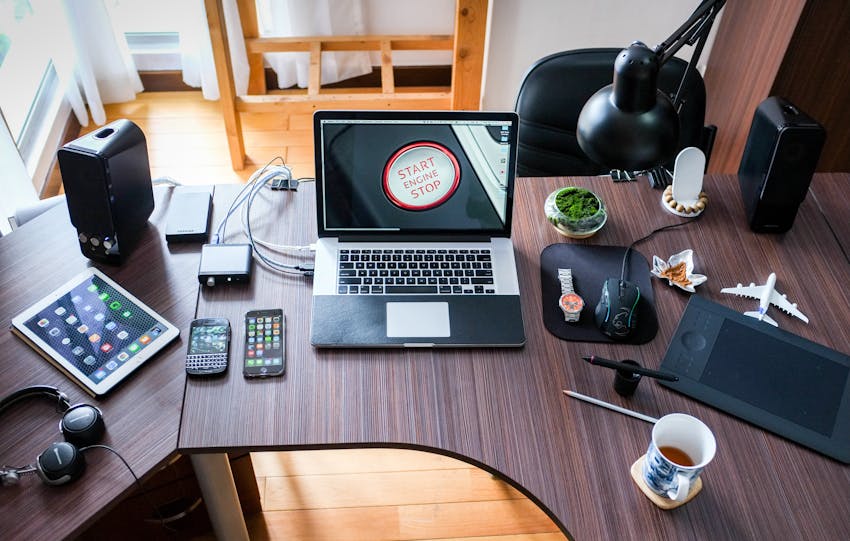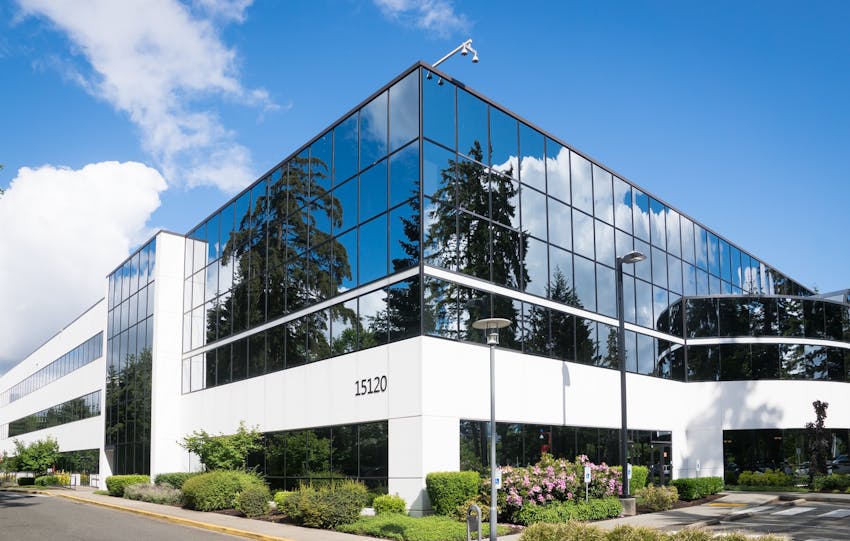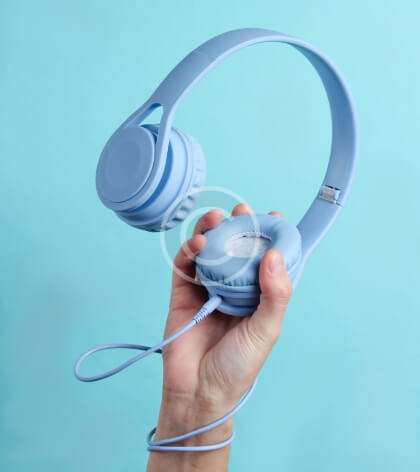As we look ahead to foldable phones in 2025, it’s clear these devices are revolutionizing the smartphone market. They’ve evolved from niche gadgets to mainstream devices, and experts predict annual shipments will exceed 50 million units by 2025. The steep price tags made me hesitate at first—flagship models cost more than $1,800. But I took the plunge last year.
I spent weeks researching the best foldable phones available. My goal was to find the perfect balance of utility, performance, and value. “Are foldable phones worth it?” This question kept coming back as I compared the latest models from Samsung, Motorola, and OnePlus. The idea of having both a smartphone’s portability and a tablet’s screen space ended up convincing me to make the switch.
What began as a simple tech experiment turned into something remarkable. The 7.6-inch display transformed my multitasking capabilities, and the unique camera features changed my whole approach to mobile photography. My foldable device has redefined my daily interactions with technology. This piece shares my experience—my reasons for switching, adaptation process, standout features, and whether you should consider making this technological leap too.
What made me consider a foldable phone
Let me be honest — rectangular smartphones don’t excite me anymore. After a decade of using similar devices with minor camera upgrades and slightly faster processors, I needed something different. Each new release felt more like a small update than an exciting purchase.
Tired of the same old smartphone design
The thrill I got when I first saw an iPhone 4 with its front-facing camera or tried Touch ID on the iPhone 5s seems lost now. My smartphone experience became predictable — better cameras, faster processors, and maybe an extra hour of battery life.
I wanted that sense of wonder back in my tech life. Traditional smartphones didn’t offer much new. They got better in small ways, but the basic shape stayed the same. The rectangular design felt stale, and I craved something that would bring back my childlike excitement about technology.
Curiosity about new foldable phone features
Foldable phones caught my eye because they solved real problems. Traditional smartphone screens (from 1.5-2.5 inches pre-iPhone to today’s 6.1-6.8 inches) couldn’t get any bigger — they’d be too hard to hold and carry.
Foldables gave us bigger screens that still fit in our pockets. The multitasking features proved useful rather than gimmicky. Running three apps at once on a 7.6-inch screen let me:
- Write emails while looking at my calendar
- Watch videos while browsing social media
- Work on documents while checking research
The Galaxy Z Fold6’s PC-style Taskbar made it easy to switch between favorite and recent apps. FlexMode solved another problem by letting the phone stand at a 90-degree angle for hands-free video calls.
Seeing others use folding phones in creative ways
My decision came after watching how people used their foldables. At my gaming club, someone used their Z Fold to show both army stats and game rules at once. This wasn’t just neat — it made sense.
A photographer friend showed me how the fold created a built-in stand, which gave her more options for taking pictures. Someone else told me they couldn’t go back to regular phones for reading books because the bigger screen worked so much better.
Content creators really sold me on flip-style foldables. They could use the main cameras for selfies and vlogs by using the cover screen as a viewfinder, which made their social media content look better.
Foldables started showing up everywhere — commuters multitasking on trains, students taking split-screen notes, and people enjoying videos on bigger screens. These devices solved real problems instead of just being expensive toys.
By 2025, experts predict foldable smartphones will be more durable with better screens. This technology has moved beyond being just a novelty. After seeing how it could help with my daily tasks, I knew it was time to try a foldable phone myself.
The first week: adjusting to a new form factor
The box sat on my desk for twenty minutes before I worked up the courage to open it. Unboxing a device that costs nearly two thousand dollars fills you with excitement and terror. My rectangular iPhone had been a trusted companion for years—would this folding contraption justify the switch?
Original impressions and setup
The first thing I noticed was how substantial it felt. Not heavy, but solid. The folded phone had a satisfying weight that subtly suggested “premium device.” Its compact form when folded amazed me—a device with a massive screen could now fit in my pocket without the usual rectangular bulge.
The phone setup followed Android’s familiar routine, but I chose to start fresh instead of transferring everything from my old device. One YouTube reviewer pointed out, “If you’re coming over from another device that has bloatware on it… if you use that transfer tool, often all of that bloatware will be downloaded here on your Samsung device”. A clean slate meant I could choose my apps more carefully.
I switched to gesture navigation instead of traditional buttons because it worked better with the folding design and saved valuable screen space.
Learning to use the foldable screen
My early days involved constant decisions: Should I open it for this task or use the cover screen? The narrow cover display made typing feel cramped at first, so I opened the phone for almost everything. The swipe keyboard soon made the cover screen more practical for quick tasks.
You could see the crease—that center line where the screen folds—but it didn’t distract me. One user explained it well: “after literally a day or so of using the phone I just looked past it”. This rang true for me too; by day three, I barely noticed it.
The best feature turned out to be Flex mode, which lets you use the phone partially folded. Samsung explains: “On the Z Fold and Z Flip series, you can use apps when the phone is partially closed. In other words, when it’s ‘flexed'”. This changed how I made video calls—I could set the phone on a desk for hands-free chats or take group photos without balancing struggles.
Multi-window functionality became part of my daily routine. Running Google Meet while checking my calendar or watching YouTube while browsing Twitter felt like a game-changer. One reviewer noted that “the multitasking capabilities seemed genuinely useful rather than gimmicky”.
Reactions from friends and coworkers
“Is that one of those folding phones?” became my office’s unofficial greeting that week. The device sparked interest everywhere.
My tech-savvy colleagues wanted to know about durability first. Most were surprised to learn that modern foldables use “ultra-thin folding glass technology built from layers of highly innovative materials” instead of the plastic screens from earlier models.
A coworker borrowed it to check email and said, “it looks so much better on that big display, it’s like a tablet isn’t it”. This comment echoed throughout the week—people saw it as two useful devices in one, not just a novelty.
Of course, showing off Flex mode for photos brought out the most excitement. Knowing how to prop up the phone and use gestures to take photos always brought surprised delight. One friend pulled up Amazon on her phone right after seeing this feature.
The week ended with all awkwardness gone. Opening and closing the device felt natural, and I knew instinctively when to use each screen. The learning curve existed but proved shorter than predicted.
The features that won me over
My foldable phone started as a cool gadget but became something I can’t live without. Four amazing features changed everything about how I use smartphones. Daily use for several weeks proved this was the right choice for me.
Multitasking with split-screen apps
Running multiple apps at the same time makes this phone special. Regular phones make you jump between apps, but my foldable lets me use up to five apps at once.
The experience feels natural. I draft emails and check my calendar together. YouTube tutorials play while I take notes in Samsung Notes. The phone lets me drag photos straight into messages. Microsoft apps work together smoothly without copying and pasting.
My gaming club nights got better too. The phone showed army stats next to game rules. No more switching back and forth between apps. This real-life application showed me how foldables solve everyday problems.
Using the outer screen for quick tasks
The cover display seemed basic at first but became crucial to my daily life. Quick tasks like checking notifications, texting, or paying with Samsung Pay work great on it.
The two-screen setup changed how I use my phone. The outer screen handles most quick tasks, so I open the big screen less often. This simple change helped me use my phone more thoughtfully.
Better content viewing and reading experience
Reading feels like holding a real book. The big screen makes videos actually enjoyable instead of just bearable.
Showing stuff to friends feels natural now. No more huddling around a tiny screen to see photos or videos. The billion-color AMOLED display makes e-readers look old-fashioned.
Improved camera flexibility with flex mode
The camera features surprised me the most. The phone becomes its own stand when folded at 90 degrees. This self-supporting feature helps with:
- Group photos without stretching your arm
- Steady night shots
- Video calls without balancing the phone
- Easy vlogging and content creation
Flex mode adjusts the camera controls to the bottom screen automatically. This simple feature changed my photography habits completely.
These four features redefined what I expect from a smartphone. The foldable design isn’t just different – it works better for my tech needs.
What I didn’t expect (in a good way)
My foldable phone surprised me in many ways after using it for a month. I had some ideas about what to expect, but they turned out to be completely wrong. These unexpected benefits made me stick with the folding design.
Battery life exceeded my expectations
I was ready to deal with battery issues. The big screen and folding mechanism seemed like they would drain power fast and keep me hunting for charging spots.
Boy, was I wrong. My foldable keeps going strong through entire workdays despite its huge display. The phone’s clever design puts batteries on both sides of the hinge, which gives it amazing battery life. The smart power system also saves juice by adjusting based on whether I’m using the cover or main screen.
The phone learned my habits, which really blew me away. Battery life got even better when I used the cover screen for quick checks. Using Flex mode without opening the phone fully saved power in ways I never expected.
Durability concerns were overblown
“Won’t the screen break easily?” My friends asked this every time I mentioned my new foldable phone. They kept asking about the crease, hinge strength, and how long it would last.
The reality turned out much better. Today’s foldables are way tougher than the first models. The hinge can handle more than 200,000 folds – that’s over five years of normal use. On top of that, the ultra-thin glass (UTG) technology protects better than the plastic screens from earlier versions.
I’ve dropped my phone twice by accident without any damage. It even survived getting caught in the rain, thanks to its IPX8 water resistance rating. Durability ended up being a non-issue instead of the constant worry I predicted.
Software updates and support were solid
The software experience turned out to be the biggest surprise. I thought the special features for foldables might get forgotten after purchase. The manufacturer kept rolling out regular updates that work perfectly with the folding design.
These updates made multitasking better, added new Flex mode features, and improved the interface. My foldable even got new features before regular phones from the same company.
Customer support was great too. When an app wasn’t working right, the support team knew exactly how to fix it for my foldable in just minutes.
These unexpected benefits changed how I see foldable phones. They’re not just cool gadgets – they’re better phones for what I need.
Would I recommend foldable phones?
After using a foldable phone for months, my friends keep asking if they should get one too. The answer isn’t simple – it really comes down to who’s asking.
Who foldables are best suited for
Some people will love foldable phones more than others. These devices are perfect if you watch lots of videos and play games. A phone-tablet hybrid like the Galaxy Z Fold or Pixel 9 Pro Fold can make a real difference. Content creators will appreciate how flip phones work as their own kickstand. This makes selfies and group photos easier without hunting for someone to take the picture. The clamshell design works great if you care most about convenience and portability. People who use multiple apps at once will find the extra screen space changes everything.
Are foldable phones worth it in 2025?
Let’s be honest – foldable phones are still expensive. Most cost more than USD 1000, and book-style foldables like the Pixel 9 Pro Fold start at USD 1800. Repairs don’t come cheap either. The Pixel 9 Pro Fold’s interior screen costs USD 1200 to fix, while the Galaxy Z Fold6 screen needs over USD 500 for repairs.
The technology has grown up quite a bit. Today’s foldables resist water (though dust can still be an issue), use ultra-thin glass instead of plastic screens, and come with hinges that last through 200,000+ folds – that’s more than five years of normal use.
What to think about before switching
Here’s what you should look at before making the jump:
- Camera compromises: The cameras aren’t as good as premium non-folding phones
- Form factor adjustment: Book-style foldables feel thick in pockets, and both types show a crease from certain angles
- Software optimization: Some apps don’t work well with foldable displays and might crash or show display problems
- Budget reality: The total cost includes cases and accessories too
The decision to buy a foldable phone depends on your budget and what you want from your next device. These trade-offs have worked well for how I use my phone, but you’ll need to weigh these factors against what matters most to you.
Conclusion
My switch to a foldable phone has completely changed how I interact with mobile technology. What started as skepticism turned into daily appreciation that shows how these devices have grown beyond simple novelties. The multitasking features, flexible camera options, and dual-screen functionality give real advantages that regular smartphones can’t match.
I found most worries about durability, battery life, and software support were overblown. My device handled daily use, unexpected drops, and even caught in a surprise rainstorm without problems. The software updates made things work better over time instead of just keeping things running.
Foldable phones come with a premium price tag, but you’re getting both a smartphone and tablet in one device. Anyone thinking about buying one should look at their usage patterns to justify the cost. The trade-offs in camera quality or thickness might be worth it for the extra capabilities.
These phones aren’t for everyone, but they mark real progress in mobile technology beyond just being an expensive gimmick. My daily use over months proves that switching wasn’t just some tech experiment – it was a practical upgrade that improved how I work, play, and communicate. Looking at my old smartphone days now, I see just how much I was missing out on.





